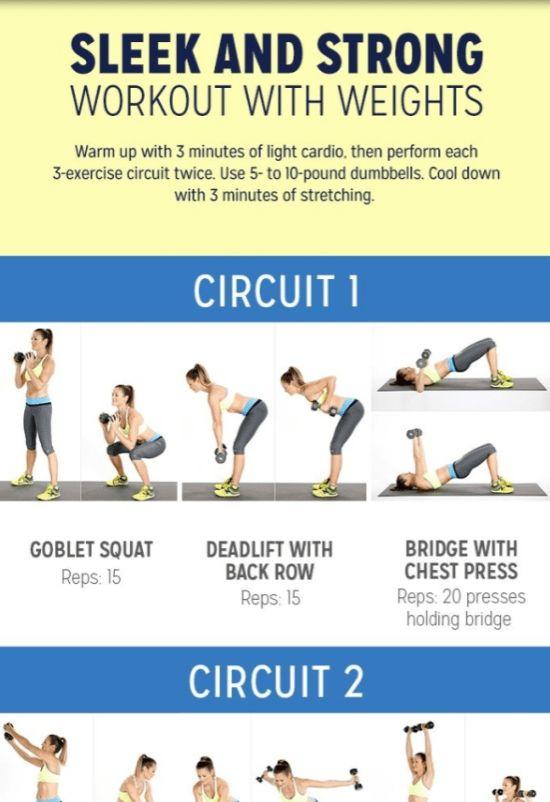Looking to elevate your fitness routine and achieve extraordinary results in less time? An effective circuit training program might be exactly what you need. Combining strength, cardio, and adaptability exercises into a streamlined workout, circuit training maximizes calorie burn, boosts endurance, and builds muscle efficiently.In this article, we’ll explore how to design and implement a circuit training program that fits your goals and lifestyle, helping you get the most out of every workout session. Whether you’re a beginner or a seasoned athlete, mastering this dynamic approach can transform your fitness journey for the better.
Table of Contents
- Benefits of Incorporating Circuit Training into Your Fitness Routine
- Designing a Balanced Circuit Training Program for Optimal Results
- Key Exercises to Include in Your Circuit for Strength and Endurance
- Tips for Progression and Recovery to Enhance circuit Training Performance
- The Conclusion
Benefits of Incorporating Circuit Training into Your Fitness Routine
Incorporating circuit training into your workout regimen brings extraordinary versatility and efficiency to your fitness journey. By combining strength exercises with bursts of cardio, circuit training not only maximizes calorie burn but also boosts cardiovascular endurance and muscle tone concurrently. This dynamic approach helps maintain engagement, reducing workout monotony and encouraging consistent, long-term adherence to your fitness goals. Additionally, the structured format of circuits allows you to customize intensity and duration, catering to all fitness levels from beginners to advanced athletes.
Beyond physical improvements, circuit training delivers practical benefits that fit into busy lifestyles. With its typically shorter session times, it offers a comprehensive, full-body workout in less than 30 minutes, making it easier to stay committed despite a hectic schedule. Other key advantages include:
- Improved metabolic rate that continues to burn calories post-exercise
- Enhanced muscular endurance through repetitive, varied movements
- Time-efficient sessions ideal for maximizing output in minimal time
- Reduced risk of overuse injuries due to the balanced nature of the workout
embracing circuit training transforms conventional workouts into a powerful tool for sustained health and fitness progression.
Designing a Balanced Circuit Training Program for Optimal Results
Creating an effective circuit training routine hinges on balancing intensity, variety, and recovery. To begin, prioritize exercises that target all major muscle groups for a full-body workout. Incorporate a mix of cardiovascular moves, strength training exercises, and flexibility-enhancing stretches to keep your program comprehensive and engaging.As a notable example:
- Upper body strength: push-ups, dumbbell rows, shoulder presses
- Lower body power: squats, lunges, deadlifts
- Cardio bursts: jump rope, mountain climbers, high knees
- Core stability: planks, Russian twists, bicycle crunches
Structuring your circuit with these elements ensures balanced development while minimizing overuse injuries. Additionally, adjusting exercise duration and rest intervals based on your fitness level encourages progression and maximizes results. Beginners might start with 30 seconds per station and 30 seconds rest, while advanced trainees can challenge themselves with longer work periods and shorter breaks, ultimately promoting endurance and strength gains simultaneously.
Key Exercises to Include in Your Circuit for Strength and Endurance
Integrating compound movements that target multiple muscle groups simultaneously maximizes both strength and endurance gains. Squats and deadlifts are foundational, engaging the lower body and core while boosting muscular power. To elevate cardiovascular stamina alongside muscle fatigue resistance, include push-ups and pull-ups, which enhance upper body strength while challenging your muscular endurance. Balancing these with dynamic, plyometric exercises like jump lunges or burpees ensures your workout remains high-intensity, promoting fast-twitch muscle recruitment and improved heart health.
Additionally, don’t overlook the importance of core-centric exercises such as plank variations and Russian twists to stabilize and support the movements in the circuit. Complement these with functional exercises like kettlebell swings or medicine ball slams, which simulate real-life movements and boost explosive power. When selecting exercises, aim for a mix that challenges your muscles in different ways—holding isometric positions, performing controlled concentric and eccentric phases, and incorporating agility drills—to create a balanced and efficient circuit that propels your fitness journey forward.
tips for Progression and Recovery to Enhance Circuit Training Performance
To continually challenge your body and avoid plateaus, it’s essential to incorporate gradual progression into your routine. Start by increasing the intensity or volume of your exercises—this could mean adding more rounds, reducing rest intervals, or using heavier weights. Another effective technique is to vary the exercises, focusing on different muscle groups or changing the movement patterns to engage your body in new ways. Moving mindfully through these progressions ensures sustainable strength gains while minimizing injury risks.
Equally vital is prioritizing recovery to maximize performance and facilitate muscle repair. Implement practices such as active recovery days involving light cardio or stretching, which help maintain blood flow without overtaxing muscles. Additionally, ensure you’re giving your body sufficient rest between sessions, fueling it with proper nutrition, and staying hydrated. Techniques like foam rolling and targeted mobility work can also accelerate recovery, keeping you fresh and ready to tackle the next circuit with renewed energy.
The Conclusion
Incorporating a well-designed circuit training program into your fitness routine can be a game-changer, helping you build strength, improve endurance, and burn calories efficiently. by balancing intensity with variety, you not only maximize your workout results but also keep exercise engaging and sustainable over the long term.Remember, consistency and proper form are key to reaping the full benefits and minimizing the risk of injury. So, whether you’re a beginner or a seasoned athlete, take the time to craft a circuit training plan tailored to your goals—and watch your fitness levels soar. Here’s to reaching your peak, one circuit at a time!

